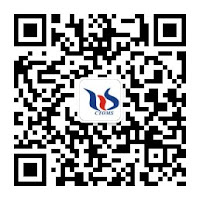Pure tungsten sheets, known for their superior physical and chemical properties, are widely used across various industrial fields. Below are the main application areas and characteristics:
1. Electronics Industry
Tungsten sheets are indispensable materials in the electronics industry, extensively used in the production of vacuum electronic devices such as cathodes, electrodes, and thermionic emitters. Their excellent electrical conductivity and oxidation resistance enable them to remain stable under high-temperature and high-vacuum conditions. Additionally, W sheets are employed in the semiconductor industry, particularly in MOCVD (Metal-Organic Chemical Vapor Deposition) equipment, serving as support components or heat dissipation parts to ensure reliable operation in high-temperature environments.
2. Aerospace Sector
In the aerospace sector, W sheets are valued for their exceptional high-temperature resistance and radiation shielding capabilities. They are used in the manufacture of thermal protection components for rocket nozzles and missile exhaust systems. Their high density and strength also make them suitable as counterweights in inertial navigation systems, enhancing system stability and accuracy.
3. Power and Energy Industry
Pure tungsten sheets are widely used to manufacture reflective screens and heating elements in high-temperature furnaces. Their strength and oxidation resistance at elevated temperatures make them ideal for critical components in the nuclear industry, such as control rods and shielding materials for reactors. Additionally, they are used in core components of fuel cells and thermoelectric conversion devices.
4. Medical Equipment
In the medical field, W sheets are utilized to fabricate radiation shielding devices and key components in X-ray imaging equipment. Their high density and excellent radiation absorption properties make them ideal for protective equipment, such as shielding plates used in radiotherapy.
5. Photovoltaic and Laser Industries
In the photovoltaic and laser industries, tungsten sheets are employed as high-temperature evaporation boats and laser reflectors. Their high melting point and low vapor pressure ensure stability in extreme thermal conditions, making them suitable for demanding production environments.
6. Precision Instruments
Pure tungsten sheets are commonly used as counterweights or inertial mass components in high-precision mechanical instruments. Their high density and machinability make them essential materials for navigation devices in maritime, aerospace, and other applications.
Chinatungsten Online is a professional manufacturer of tungsten and molybdenum for nearly thirty years. We can supply tungsten products in customized designs. Please free feel to contact us when you got the purchasing plans.
If you have any inquiry of tungsten sheets, please feel free to contact us:Email: sales@chinatungsten.com/sales@xiamentungsten.com

















































